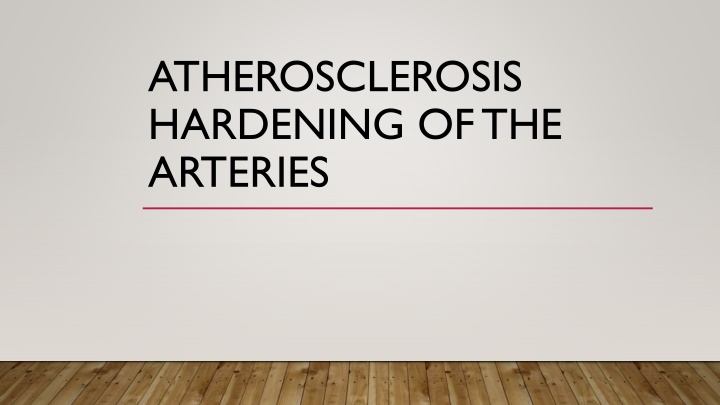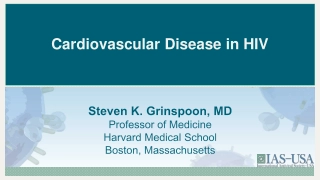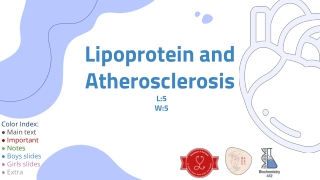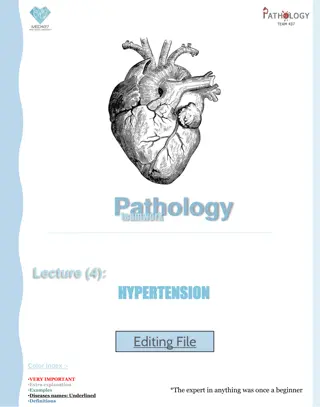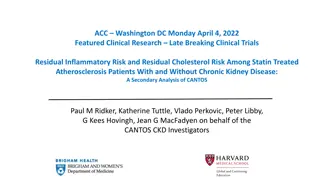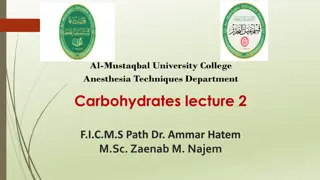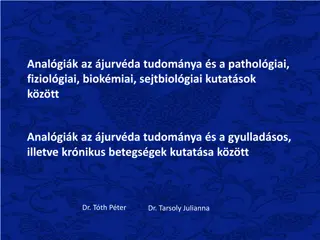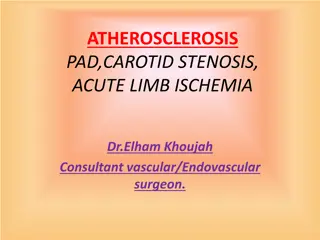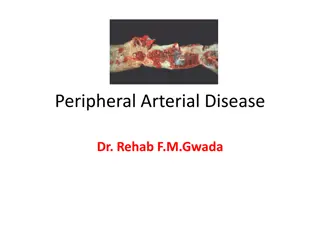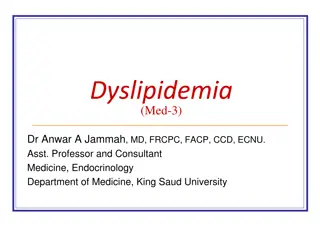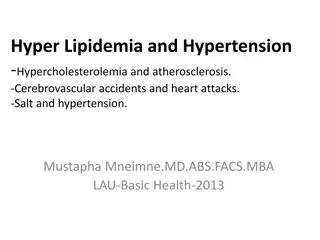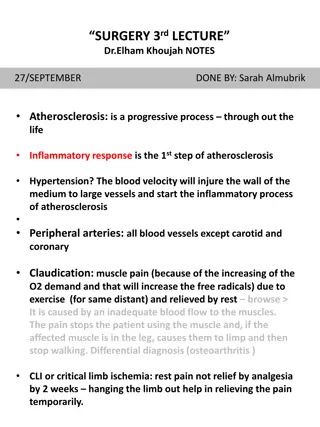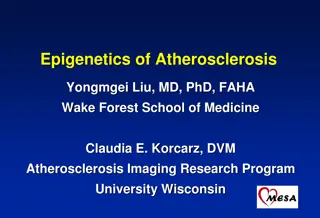ATHEROSCLEROSIS
Atherosclerosis is a chronic inflammatory disease that affects arteries, starting with lipid accumulation and progressing to potential complications like heart attack. Learn about its pathophysiology, clinical presentation, and nursing management strategies to support patients. Hypertension is also discussed as a related condition in this informative content.
Download Presentation

Please find below an Image/Link to download the presentation.
The content on the website is provided AS IS for your information and personal use only. It may not be sold, licensed, or shared on other websites without obtaining consent from the author.If you encounter any issues during the download, it is possible that the publisher has removed the file from their server.
You are allowed to download the files provided on this website for personal or commercial use, subject to the condition that they are used lawfully. All files are the property of their respective owners.
The content on the website is provided AS IS for your information and personal use only. It may not be sold, licensed, or shared on other websites without obtaining consent from the author.
E N D
Presentation Transcript
ATHEROSCLEROSIS HARDENING OF THE ARTERIES
PATHOPHYSIOLOGY Atherosclerosis is a chronic inflammatory disease. Atherosclerosis is a chronic inflammatory disease. Atherosclerosis begins with fatty streak which is an accumulation of lipid laden foam Atherosclerosis begins with fatty streak which is an accumulation of lipid laden foam cells in the intimal layer of the artery. cells in the intimal layer of the artery. Lipid retention is the first step in the pathogenesis of atherosclerosis which is followed Lipid retention is the first step in the pathogenesis of atherosclerosis which is followed by chronic inflammation at susceptible sites in the walls of the major arteries lead to by chronic inflammation at susceptible sites in the walls of the major arteries lead to fatty streaks, which then progress to fatty streaks, which then progress to fibroatheromas fibroatheromas which are fibrous in nature. In the advanced stage of atherosclerosis, calcified scar tissue will form. In the advanced stage of atherosclerosis, calcified scar tissue will form. If the endothelium is damaged and collagen is exposed, platelets stick to the damaged If the endothelium is damaged and collagen is exposed, platelets stick to the damaged area and a blood clot (thrombus) forms. area and a blood clot (thrombus) forms. If blood flow in the coronary blood vessels is stopped, it will result to heart attack. If blood flow in the coronary blood vessels is stopped, it will result to heart attack. which are fibrous in nature.
CLINICAL PRESENTATION Some sign and symptoms of atherosclerosis includes sudden numbness or weakness in the arms or legs, difficulty speaking or slurred speech, temporary loss of vision in one eye, or drooping muscles in the face
NURSING MANAGEMENT Nurses need to assess patient s learning needs One way of motivating patients is to modify their behaviour is to help them understand the nature of atherosclerosis, its prognosis and ways to control disease progression Nurses need to explain the risk factors related to atherosclerosis and focus on life style changes. Nurses should educate patients about the effect of smoking on the arterial system Recommend follow up of patients on statins to monitor required lowering cholesterol Accompany any prescription of medication with dietary control
HYPERTENSION A chronic disease characterized by elevation of blood pressure. Hypertension can be classified by cause as either essential (also known as primary or idiopathic) or secondary.
CLINICAL PRESENTATION might experience dizziness, shortness of breath, headaches, and nosebleeds, which could indicate that your blood pressure is high. Complications such as heart disease, stroke, and kidney failure can occur if long-term hypertension is not adequately treated.
NURSING MANAGEMENT Encourage the patient to consult a dietitian to help develop a plan for improving nutrient intake or for weight loss. Encourage restriction of sodium and fat Emphasize increase intake of fruits and vegetables. Implement regular physical activity. Advise patient to limit alcohol consumption and avoidance of tobacco. Assist the patient to develop and adhere to an appropriate exercise regimen.
MYOCARDIAL ISCHEMIA The pathophysiology of myocardial ischemia. Myocardial ischemia is responsible for angina, unstable angina, and, less commonly, shortness of breath secondary to ischaemic left ventricular dysfunction (angina equivalent) as well as cardiac arrhythmias.
CLINICAL PRESENTATION Patients with typical acute MI usually present with chest pain and may have prodromal symptoms of fatigue, chest discomfort.
